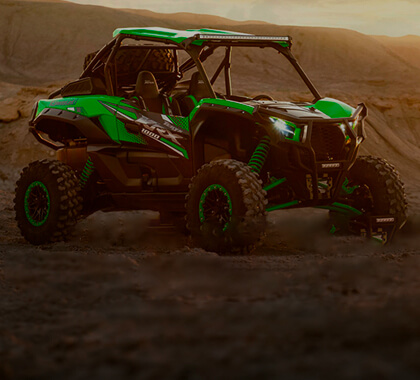What to Look Out for When Buying Kawasaki KRX 1000 Winches?
KRX 1000 Winch Types
The choice of power source in winches is pivotal and it affects the very type of which you are going to buy. First of all, electric winches are a common choice for the KRX 1000 due to their straightforward installation and operation, deriving power from the vehicle's battery. They're suitable for general recovery and occasional heavy lifting. This is exactly why most KRX 1000 owners use these and why these are the most popular winches in general. For those venturing into more demanding terrains, hydraulic winches, powered by the vehicle's power steering pump, are a reliable option. These are built for sustained, heavy-duty use, ideal for frequent and prolonged winching activities. Gas-powered winches add another dimension with their independent engine. For Kawasaki KRX 1000 adventurers in remote areas, where reliance on the vehicle’s battery isn't ideal, these winches offer a robust and self-reliant solution. To figure out your needs best, think about how your usual outings look like and which one of these fits in that picture the best!
Load Capacity
Understanding load capacity is vital as this is something that can either make or break a reliable Kawasaki KRX 1000 winch. A winch should ideally have a capacity of at least 1.5 times the weight of your Kawasaki KRX 1000 which is somewhere in the vicinity of 1,900 lbs. This means that a good idea would be to buy a winch that can easily withstand around 3,000 lbs. Considering the typical companions in your off-roading ventures, it might be wise to opt for a winch with a capacity that can handle the heaviest vehicle in your group. This foresight not only ensures safety but also enhances versatility across different recovery scenarios.
Winch Line Material: Balancing Strength, Safety, and Maintenance
The winch line material poses another crucial decision as these are every bit as important as the winch itself Good old steel cables have been around for centuries as they are known for their ruggedness, and because they represent a cost-effective choice. With that in mind, we also need to mention that they tend to be heavy and are often prone to corrosion. Synthetic ropes like Dyneema, although more expensive, provide a higher strength-to-weight ratio and are safer in breakage scenarios, albeit requiring more regular maintenance. These synthetic lines are the next big thing as they are more durable than steel but aren’t nearly as heavy or prone to corrosion. Be sure to pick your Kawasaki KRX 1000 winch line materials wisely!
Safety Features and Control Mechanisms
Incorporating safety features like automatic brakes and a clutch for free spooling adds a layer of security and reliability, essential in unexpected recovery scenarios where pulling heavy loads is expected. Additionally, modern Kawasaki KRX 1000 winches may offer remote and wireless controls, allowing for safer and more convenient operation, particularly in challenging conditions.
Additional Considerations
Beyond these general guidelines, specific considerations for the Kawasaki KRX 1000 include assessing the compatibility of the winch with the vehicle's design and power capabilities, both modified and non-modified. Also, it's advisable to consider the environmental conditions you frequently encounter. For instance, if you regularly traverse watery terrains, a winch with a higher waterproof rating might be more suitable. Storage and proper mounting are also very important as you should always mount your winch as recommended by the maker which usually means bolting it or welding it onto a structural part of your KRX 1000.





